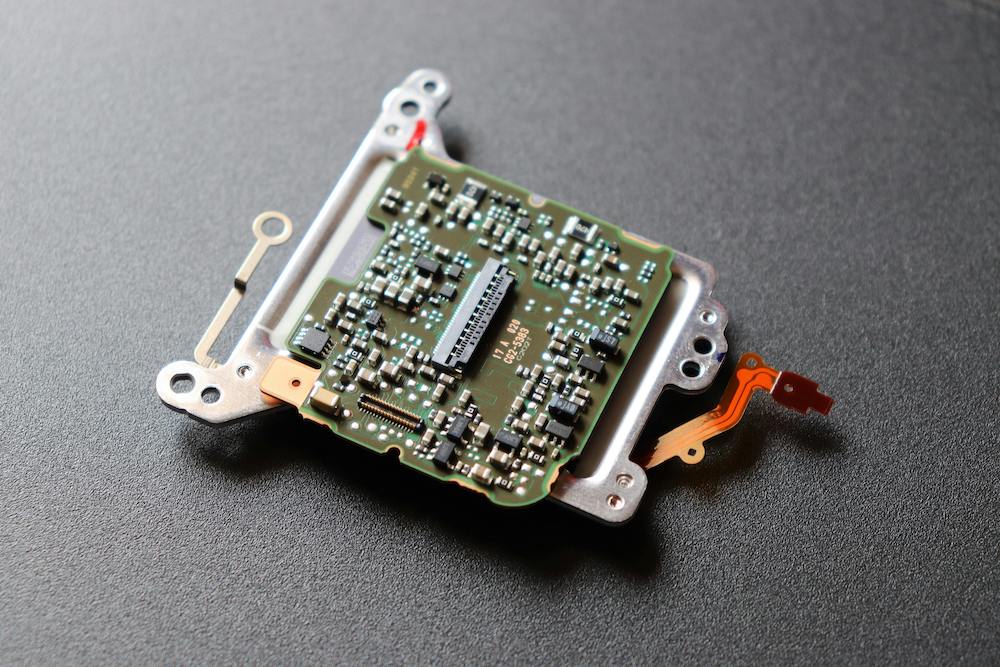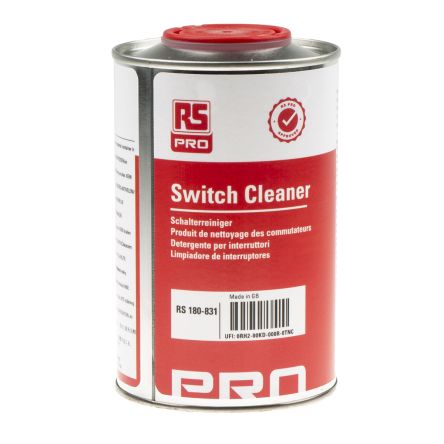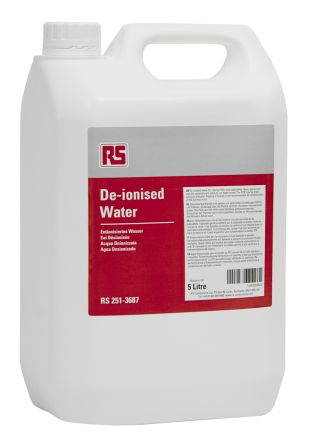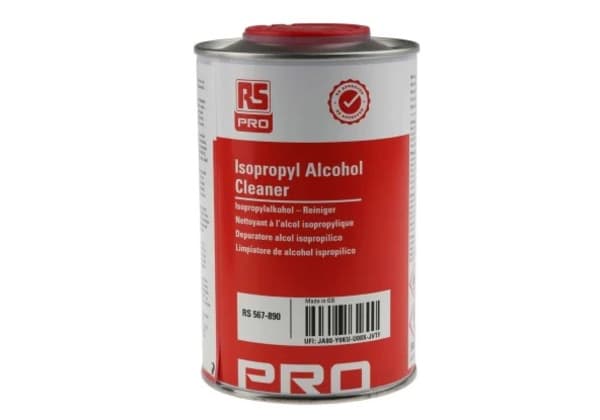- Published 22 Oct 2025
- Last Modified 22 Oct 2025
- 8 min
Electronics Cleaning Chemicals: Solving Common Challenges & Their Solutions
Facing sticky PCBs or poor conductivity? Discover how to clean electronics effectively, remove flux, and degrease safely using the right chemicals and methods.

Electronic devices require regular cleaning to operate properly and safely, which can be challenging due to component delicacy and the chemical reactions behind contaminants that form. Learn here about different electronics cleaning chemicals available and their uses.
Are Your Electronics Dirty? Identifying Contamination Issues
- Poor performance: Dust and grime sticking to electronics dampens current due to increased resistance. This draws more electrical energy and risks malfunctions
- Overheating: Increased resistance generates heat, increasing cooling energy needs and fire risk. Contaminants also prevent heat dissipation and block airflow
- Corrosion: Flux residue and electronics etching chemicals can attract moisture, corroding away the metal available to transmit electricity, increasing resistance
- Current leakage or shorts: Ionic contamination creates conductive metal lines (dendritic growth) on printed circuit boards (PCBs). They cause current leakage and eventually short circuits when they reach an adjacent circuit point
- Poor coating adhesion: As with paint, conformal coating can fail to hold in contaminated areas
Actionable Solutions: Types of Cleaning Chemicals and How to Use Them
Isopropyl Alcohol (IPA)
Isopropyl alcohol is a common general-purpose cleaning chemical used on electronics. It’s a flammable, colourless liquid with a distinctive scent. It easily penetrates dirt, flux residue, and oils on various surfaces—though it can damage rubber and silicone seals. IPA rapidly evaporates, which electronics need since cleaner residues can interfere with signals and cause electrical shorts.
Use IPA for cleaning PCBs, connectors, peripherals, and screens (provided you dilute it 50/50 with water). Its fast drying time also makes it a good general-purpose cleaner for electronics that need expedient cleaning to minimise downtime.
Is isopropyl alcohol rubbing alcohol? Yes, at 70% strength. Undiluted IPA is not generally safe for home cleaning use, but it’s excellent for industrial electronics cleaning.
We stock IPA tins, pourable bottles, and spray bottles (with straws for precision cleaning). For delicate cleaning, apply IPA using a cotton or foam swab and gently scrub the area.
Contact Cleaners
Contact cleaners are for cleaning dust, grease, dirt, and oxidation from electrical contact points like switches, connectors, relays, circuit breakers, and battery terminals: any sliding electrical contact points that can be disconnected.
A contact cleaner for electronics can be solvent-based or water-based. Solvent-based cleaners have stronger cleaning and quicker-drying abilities but are more environmentally hazardous to dispose of. Simple solvent-based contact cleaners include rubbing alcohol and acetone. Both are effective, quick-drying, and residue-free, but can damage the plastics and seals used to encase electronics.
Speciality electronics contact cleaners can be non-conductive, non-flammable, and even safe for live electronics, though that often carries health and environmental risks. Contact cleaners are usually in spray bottles with precision straw attachments.
Flux Removers
Soldering joins electronic contacts, especially in circuit boards, and flux is essential in soldering. What is flux? It’s a chemical applied during soldering to repel oxides, help the solder flow, and make the solder wet enough to adhere to the metal surface. If flux residue isn’t removed afterwards, it can become acidic and draw in moisture, leading to corrosion.
We offer flux removers in spray bottles, wipes, application pens, and pour bottles, which let you finely apply it using a cotton swab. Also, IPA can often handle flux removal. You can also clean PCB flux automatically in batches using solvent immersion, ultrasonic cleaning, and water-based flux remover spraying (essentially a PCB dishwasher).
The flux remover strength, cleaning method, and cleaning duration depend on the flux. R, RA, and RMA fluxes come off easier using standard flux removers or IPA. Cleaning ‘no-clean’ flux or flux from higher-temperature soldering (as with lead-free soldering) requires a stronger remover and additional scrubbing. Aqueous flux can require a water-based flux remover.
Degreasers
The best cleaning chemicals for greases or oils on electronics can be IPA or contact cleaners. IPA-based electronics cleaning solvents can be meant for degreasing specifically. Other IPAs and contact cleaners can be well-suited for removing grease, though ensure they won’t damage the base materials.
Vapour degreaser machines are good for maintaining crucial medical and aerospace electronics. They hold electronics in the vapour above boiling solvent, letting vapours condense uniformly and dissolve away soils. The parts are then lifted above the vapours to drain the liquids and soils.
Speciality Cleaners (e.g., Plastic-Safe)
Harsh solvents can embrittle and crack rigid plastic electronics housings. Products using acetone or toluene can be destructive to acrylic or polycarbonate materials, unlike solvents based on alcohol or hydrocarbons.
Electronics cleaners can also deform or dissolve rubber seals—further exposing the electronics to contaminants. The seal’s material affects how it can withstand electronics cleaning chemicals. Rubber and silicone seals are prone to this deformation and wear, while Teflon seals fare better.
When introducing electronics cleaning products, thoroughly test their effects on electronic components and their adjacent supporting parts.
Browse some of our top electronics cleaning products:
Applications: When and Where to Use
PCB Cleaning
Start with compressed air or light brushing to remove most dust and debris. Use short air bursts at a safe distance to prevent damage.
Flux residue removal is essential after soldering work. Use IPA or a PCB cleaning spray meant for flux removal, provided it’s suited for your flux. For stronger fluxes (or large PCB volumes), consider an automated cleaning system that uses solvent baths, ultrasonics, or a spraying cycle.
Flux residue won’t evaporate, though. It needs to be sprayed completely off the PCB or picked up with a swab. Your cleaning work might spread flux residue around and leave trace amounts elsewhere that could still corrode. It’s important to be thorough when removing flux and to inspect the PCB afterwards.
Cleaning corrosion and oxidation is more difficult. They already indicate damage that cleaning can’t fix. You’ll need to neutralise this using white vinegar, potassium hydroxide, or a baking soda paste. Apply gently with a cotton swab, wait a few minutes, and gently scrub the problematic deposits away. Rinse residue with distilled water and then rinse with IPA to rapidly remove moisture (to prevent further corrosion).

Connector Maintenance
For cleaning switches, connectors, or relays, you’ll need a contact cleaner for electronics. Choose one based on what you’re cleaning and its contamination: dirt, oils, greases, or oxidation. Severe cleaning chemicals can damage adjacent plastics, however.
Start by safely disconnecting the power, unless the equipment and the contact cleaner allow cleaning while energised. Use a cotton swab, brush, or lint-free cloth to apply the cleaner and gently rub away contamination.
Apply pressurised contact cleaners gently, increasing pressure gradually, to avoid damaging electrical contacts. Avoid aggressive scrubbing, though wire brushes and sandpaper can be used carefully to break through stubborn corrosion and dirt.
Allow adequate drying time before reconnecting power. Water-based contact cleaners need more drying time, though they can be flushed away with water to help this.
Component Residue Removal
If you select the wrong cleaner or don’t rinse it away, this can leave residues that cause further damage.
Ionic residues, including the severe white residue, appear due to adverse reactions between the cleaner, the flux, and the base materials. This ionic contamination leads to dendritic growth, current leakage, and short circuits.
Organic residues carry milder risks (mostly aesthetic and coating adhesion ones) and come from improper cleaning techniques or selecting the wrong flux remover.
Test whether a drop of water or IPA dissolves the residue, respectively indicating ionic and organic. Accordingly, choose a strong, compatible water- or solvent-based cleaner. Spray it on, scrub the residue off with a swab or brush, rinse with the same cleaner, and ensure it drains or dries without new residue.
Safety Best Practices for Handling Chemicals
Always consider the health and safety risks of these chemicals.
- Flammability: PCB cleaning sprays, especially IPA, can be extremely flammable. Use them far from sparks and flames
- Inhalation: If you’re experiencing headaches or dizziness, stop using these chemicals and reassess them
- Chemical contact: Wear PPE for your skin and eyes
- Environmental: Electronics cleaners previously depleted the ozone layer due to their Freon content. Since the global phase-out of these substances, you must now check for the cleaners' smog-causing Volatile Organic Compounds and their Global Warming Potential (GWP). To ensure compliance, study the regulations set by the Environment Agency in England (or its equivalents in Scotland, Wales, and Northern Ireland) and adhere to the Fluorinated Greenhouse Gases (F-Gas) Regulation for any residual or substitute high-GWP chemicals
Keep safety data sheets (SDS) and a cleanup plan for each chemical in use.
ESD Considerations in Cleaning
The rubbing and wiping of electronics cleaning generate static, and even tiny static discharges can be imperceptible to humans but catastrophic for PCB components. It’s vital to stay grounded while cleaning electronics.
Wear an ESD wrist strap and anti-static gloves, stand on an ESD-safe mat, and use ESD-safe tools, all of which RS carries.
Choosing the Right Cleaner for Your Project
For every electronics cleaner you select, think about the types of contaminants you need to remove, what the base materials can withstand, how you’ll thoroughly remove the cleaner when you’re done, and the safety and environmental concerns. This will keep your crucial electronics running reliably, efficiently, and safely. Browse RS electronics cleaning chemicals today.





